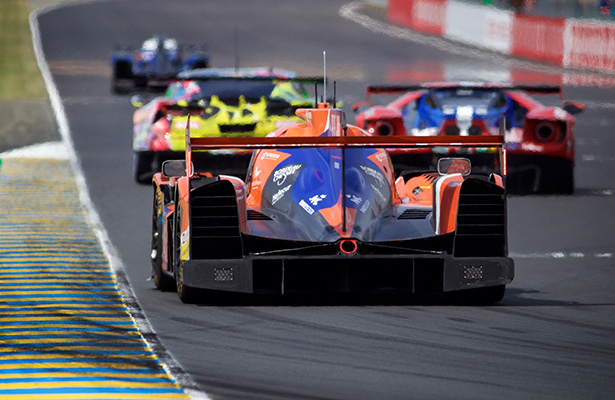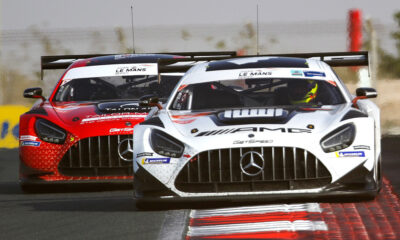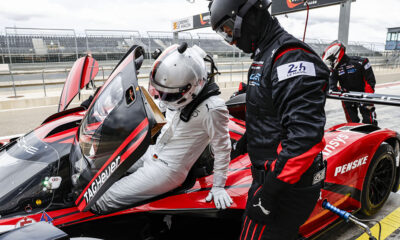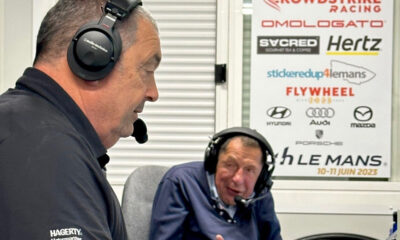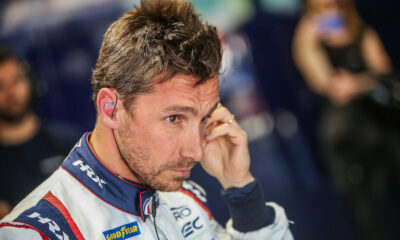Drivers entering this weekend’s 24 Hours of Le Mans have delivered mixed responses to the increased speed shown by LMP2 cars at the test day, as trap figures exceeded 210 mph.
The new-for-2017 chassis and engine packages combined to see the LMP2 field lock out 12 of the top 13 positions on the maximum speed chart at the official test.
Roberto Lacorte recorded the highest speed of 341.3 km/h in the No. 47 Cetilar Villorba Corse Dallara P217 Gibson, over 10 km/h faster than the top LMP1 Hybrid.
The impact of the greater speed for LMP2 machinery has been a talking point ahead of the Le Mans week for all classes, as LMP1 runners will find it harder to out-drag the LMP2 cars down the Mulsanne Straight, while GTE-Pro and GTE-Am drivers will be passed more regularly and with far greater pace.
The changes will naturally be felt most by the drivers in LMP2, who will be lapping well below last year’s pace.
It is not a question of if they break the existing class lap record, but rather, by how much.
“We are now 20 km/h quicker, at least. At the test, the best lap time was 3:28 – before the best time in ideal conditions was 3:36 and usually it was 3:40,” United Autosports’ Filipe Albuquerque told Sportscar365.
“3:40 was my first lap ever here with this car, which was kind of crazy. It’s good fun because we can pass the GT’s easier, which is fantastic.
“I think we’re going to have a good fight with the LMP1s and especially the ByKolles. It’s going to be interesting. The LMP1s don’t pass us as easily with the top speed because we are the same.”
Another man anticipating a closer fight between the sole privateer LMP1 entry and the LMP2 cars is Oliver Webb, who feels the pace increase has overshadowed the gains ByKolles has made with its new Nismo engine.
“We are five seconds quicker than we were last year with the same rules and regs and a slightly different rear wing, which is a massive achievement for the team,” Webb told Sportscar365.
“But it has been cast a bit of a shadow on by the LMP2s which are nine seconds faster around this track, which is just mad. So it looks like we’re only half a second clear of them.
“It’s the same LMP2 grid as last year with all the same talented drivers that were in there, six seconds up the road, which means we’d easily by 20 laps ahead by the end of the race.
“Whereas at the moment it looks like from what we can see from our strategy meetings, if everything goes perfectly, we’re going to be two to five laps ahead, which is going to be tight in 24 hours.”
Webb added that the LMP2 speed increase was “100 percent” too much, and feels it could spook some inexperienced drivers, raising a possible safety question.
“It’s not anyone’s particular fault, it’s just that teams are very clever these days at finding the grey areas of the rules,” he said.
“Dallara are going 25 km/h quicker than a hybrid car. When you think it could be someone’s first ever Le Mans as a bronze driver and he’s knackered and it’s 3 a.m. and it starts raining and he’s on slicks at almost 350 km/h, that’s big.
“I would have thought [the ACO] would change the BoP for LMP2, which I know hasn’t been done before this race, not only for us, but the fact that it’s going to be very hard for the hybrid guys.”
Albuquerque is also conscious about how to manage traffic, particularly when leading an LMP1 car out of a corner.
“I think now we just need to be careful in the middle sections out of the corners,” Albuquerque said.
“We know they have 600 horsepower out of the corners that don’t have, but from the middle straight on, we know that if they just caught us they will stay [behind us].
“Before, we had to keep looking in the mirrors to see: will he dive? Will he not dive? Now, we just know that we can brake whenever we want and they will not be able [to pass]. For us, it’s easier.”
Albuquerque’s thoughts were echoed by CEFC Manor TRS Racing driver Vitaly Petrov, who, like Webb, is concerned about the rapid gains that will be made on GT cars when picking through traffic.
“We did some race simulations and some LMP1 cars passed us very easily,” Petrov told Sportscar365. “I don’t know, maybe it’s more difficult for them to overtake us because our top speed is equal to them.
“It’s just more dangerous with GT cars which are really slow. If they are going quite slow and stop, this can be some problem.”
Corvette Racing’s Oliver Gavin is also concerned about possible clashes on-track, believing that the added speed of the LMP2 cars will encourage its drivers to attempt more opportunistic overtakes.
“The amount of pace that they’ve got off the corner and in a straight line, they’re diving up the inside of you in places where last year you knew that you didn’t really have to think too much about where they were going to go or what they were going to be like,” Gavin told Sportscar365.
“This year you know a P2 car will be dive-bombing you into Tetre Rouge. Likewise, coming out of Corvette Corner, the last corner in the Porsche curves, that little straight that you have before the kink going into the Ford Chicane.
“It’s kind of changed the dynamic of the way you have to exist on track together, so there’s going to be some give and take. There has to be.
“But I know I’m going to be spending more time looking in the rear radar, camera system that we’ve got in our Corvette C7.R.”
ACO director of sports Vincent Beaumesnil added that the speed trap times taken from the test day are not to be taken on face value, as the LMP1-H runners will have already started coasting for the braking zone, reducing their true speed slightly.
“Keep in mind that the trap speeds, the position is there for a long time and the P1s are in economy mode,” Beaumesnil told Sportscar365.
“At the end [of the straight] P2 is a bit faster because it’s still accelerating and the P1 is already in economy mode slowing down a little bit, so this is why you have this. But if you go a few meters before, the P1 is higher.”
When asked if he expected traffic issues as a result of the quicker LMP2 cars, Beaumesnil said: “We will see. The drivers know what they have to do.
“I know that it’s a big improvement for the P2 to manage the traffic with the GT cars, which was the biggest concern.
“And then between prototypes, we have top professional drivers in LMP1, they know what they have to do. We are always cautious and careful, but we will see.
“In the test day we had no real issue with that, so let’s see what happens in the race.”
John Dagys contributed to this report.


